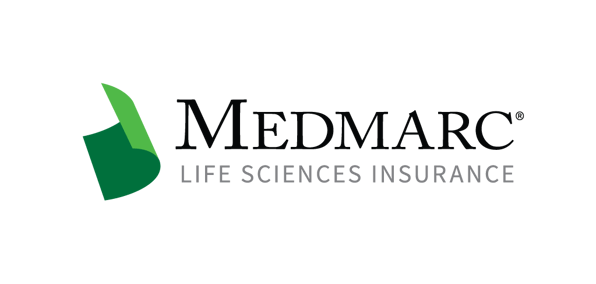H.R. 1 Restores Deductibility of Research and Development Expenses
Both chambers of the U.S. Congress have passed House Resolution 1 (H.R. 1), which offers several significant tax benefits for companies in the life sciences industry. One of the most important of these is that research and development expenses can be fully expensed in the first year, but H.R. 1 reduces the tax liability for some stock transactions as well.
President Donald Trump signed H.R. 1 into law July 4, which renews many provisions of the Tax Cuts and Jobs Act (TCJA) of 2017. H.R. 1 added subsection A to Section 174 of the Internal Revenue Code, which was originally enacted in 1954. When first introduced, Section 174 allowed small business entities to fully deduct R&D expenses for the tax year during which those expenses were incurred. The TCJA had changed this policy to require amortization over a period of five years, although this did not go into effect until Jan. 1, 2022.
2017. H.R. 1 added subsection A to Section 174 of the Internal Revenue Code, which was originally enacted in 1954. When first introduced, Section 174 allowed small business entities to fully deduct R&D expenses for the tax year during which those expenses were incurred. The TCJA had changed this policy to require amortization over a period of five years, although this did not go into effect until Jan. 1, 2022.
Section 174A allows small businesses to fully deduct R&D expenses incurred as of Jan. 1, 2025, although this does not apply to R&D expenses incurred in locations outside the U.S. This policy extends to software R&D as well, including artificial intelligence and machine learning software. These are two areas of considerable interest in medical technology as can be seen in the FDA’s recently updated list of AI products, 38 of which were cleared or approved just in the month of May 2025.
Section 174A, which applies to entities with average gross receipts of $30 million or less over the three previous years, also allows companies to retroactively claim unamortized R&D expenses for tax years 2022-2024. These expenses can be fully deducted for the 2025 tax year or over the course of the 2025 and 2026 tax years.
H.R. 1 also amended Section 1202 of the Internal Revenue code, which governs the tax treatment of qualified small business stocks (QSBS). Previously, Section 1202 had permitted non-corporate taxpayers to exclude from federal income tax all or part of the gains realized on the exchange or sale of a QSBS. This provision had applied only when the holder of that stock had retained the stock for a minimum of five years.
Enacted in 1993, Section 1202 initially allowed the holder of the stock to exempt only 50% of the gain from the sale. That limit was increased to 75% in 2009, then to 100% the following year upon passage of the Small Business Jobs Act of 2010. Section 1202 was not applicable to stock issued by an entity with gross assets of greater than $50 million, however.
H.R. 1 significantly expanded Section 1202 in several key respects, such as increasing the cap on the stock issuer’s gross assets to $75 million. This amount will be indexed annually going forward to account for inflation. H.R. 1 also shortens the window through which shares of a QSBS can be sold and exempted, albeit in a tiered fashion.
As of July 4, 2025, the shareholder can exempt 50% of the gain from federal income tax after three years, a figure that rises to 75% at four years. The shareholder can exclude 100% of the gain at five years. However, Section 1202 now also lifts the cap on the exemption for gains from $10 million to $15 million, which will also be adjusted for inflation.
H.R. 1 drew praise from several sources such as the U.S. Chamber of Commerce, which stated July 4 that enactment of the bill constitutes a legislative victory for economic growth. Suzanne Clark, President and CEO of the Chamber, said the bill “represents the kind of forward-looking, pro-growth policy that is vital to maintaining America's prosperity and competitive edge.”
The Advanced Medical Technology Association (AdvaMed) praised the bill as well in a July 3 statement that highlighted the importance of tax policy in sustaining U.S. leadership in medical technology. AdvaMed President and CEO Scott Whitaker said the addition of Section 174A “will spur even greater medtech R&D from our fast-moving innovators.” Whitaker stated that the changes to the tax status of sales of QSBS companies “will support early-stage companies trying to raise capital and hire talent, which is critical to getting groundbreaking medtech developments into the hands of doctors and their patients.”
Whitaker observed that 70% of the devices used in the U.S. are manufactured domestically, adding that jobs in the medical device and diagnostics industries have grown at triple the rate of the U.S. economy as a whole. AdvaMed will continue to work with the White House and leaders in the House and Senate to ensure that tax policy will sustain the vitality of the device industry, Whitaker stated.
For additional resources contact the Marketing department
Phone: 888-633-6272
Medmarc is a member of ProAssurance Group, a family of specialty liability insurance companies. The product material is for informational purposes only. In the event any of the information presented conflicts with the terms and conditions of any policy of insurance offered from ProAssurance, its subsidiaries, and its affiliates, the terms and conditions of the actual policy will apply.
Copyright © 2025 - Medmarc
